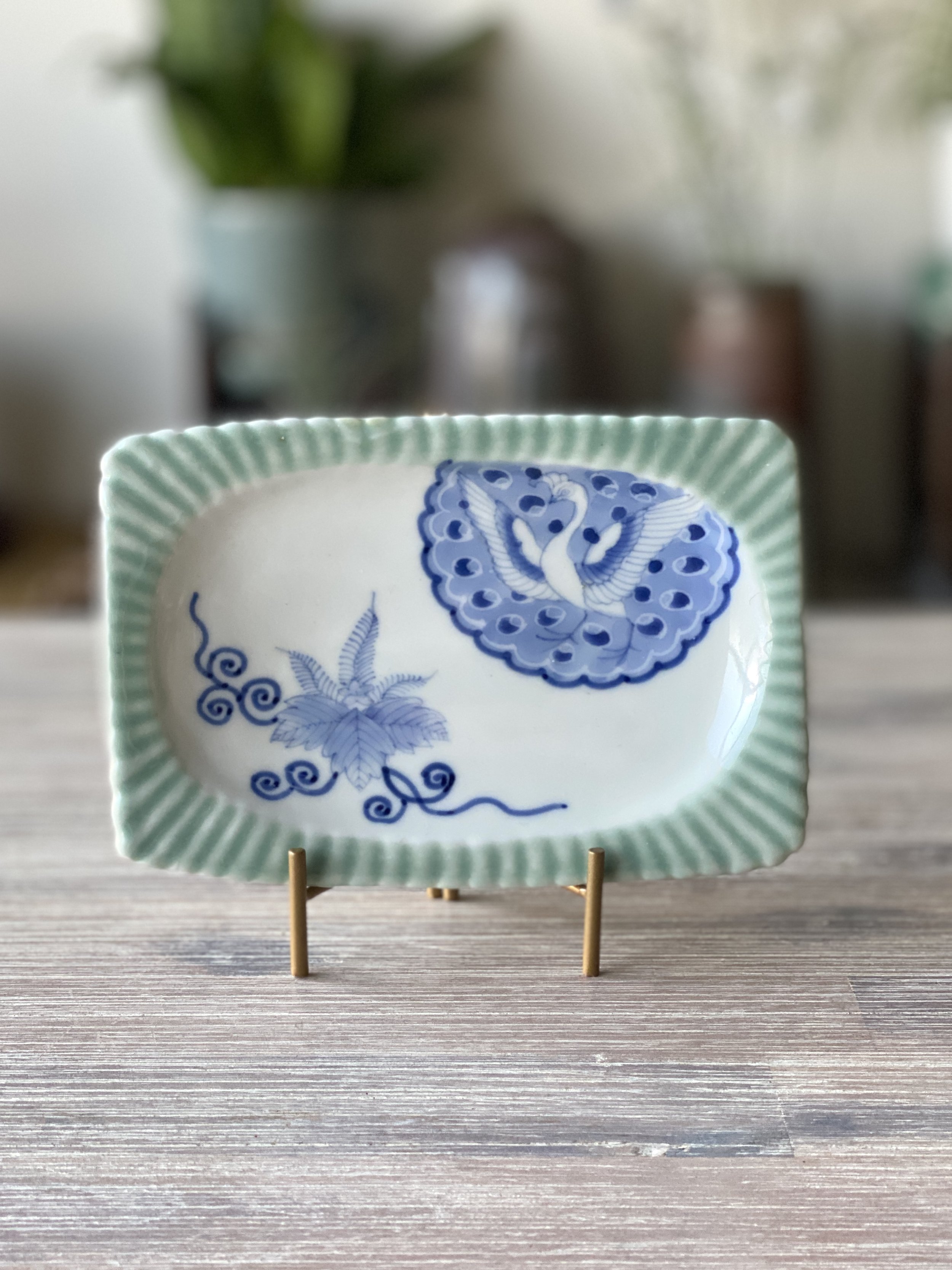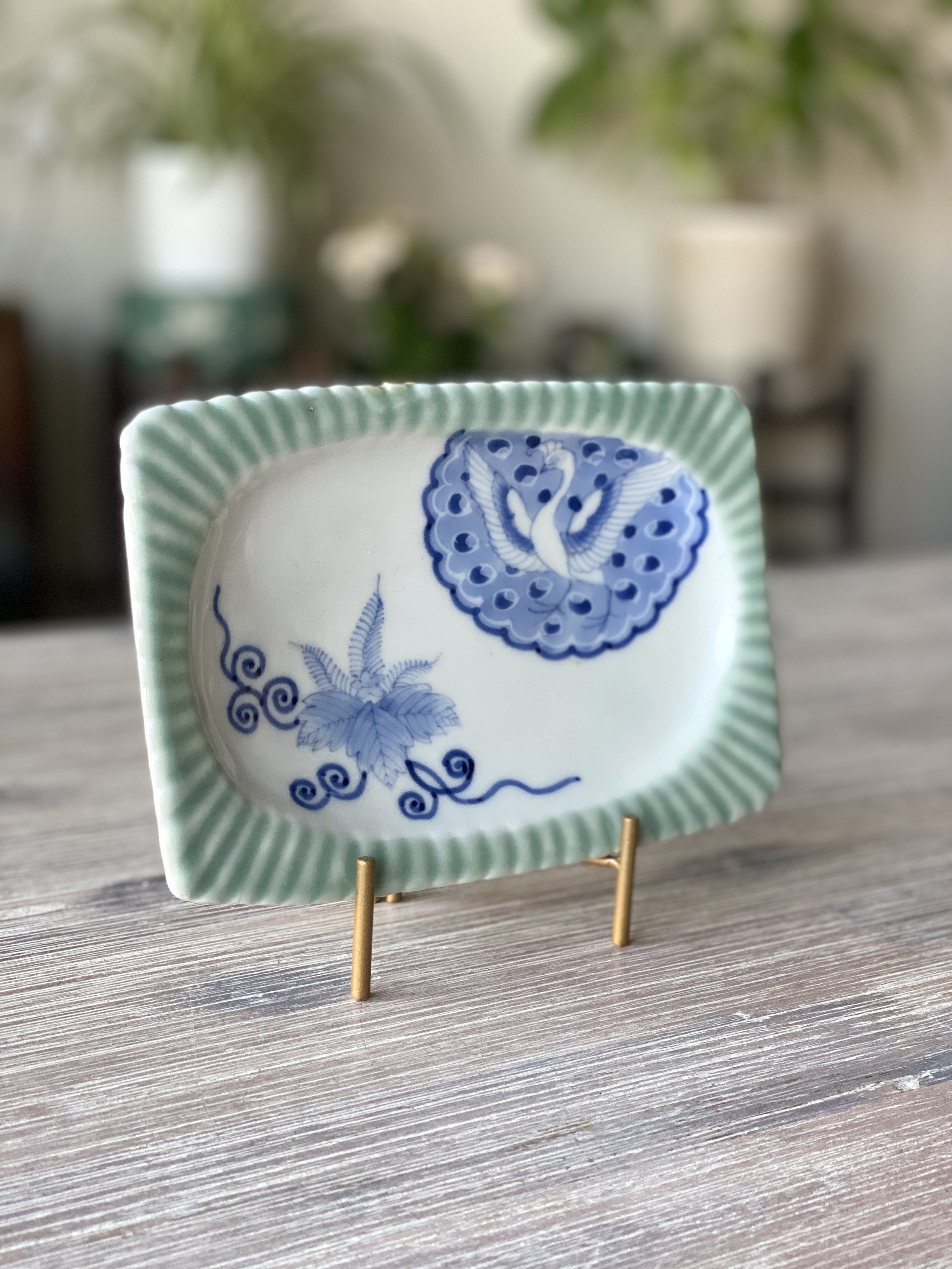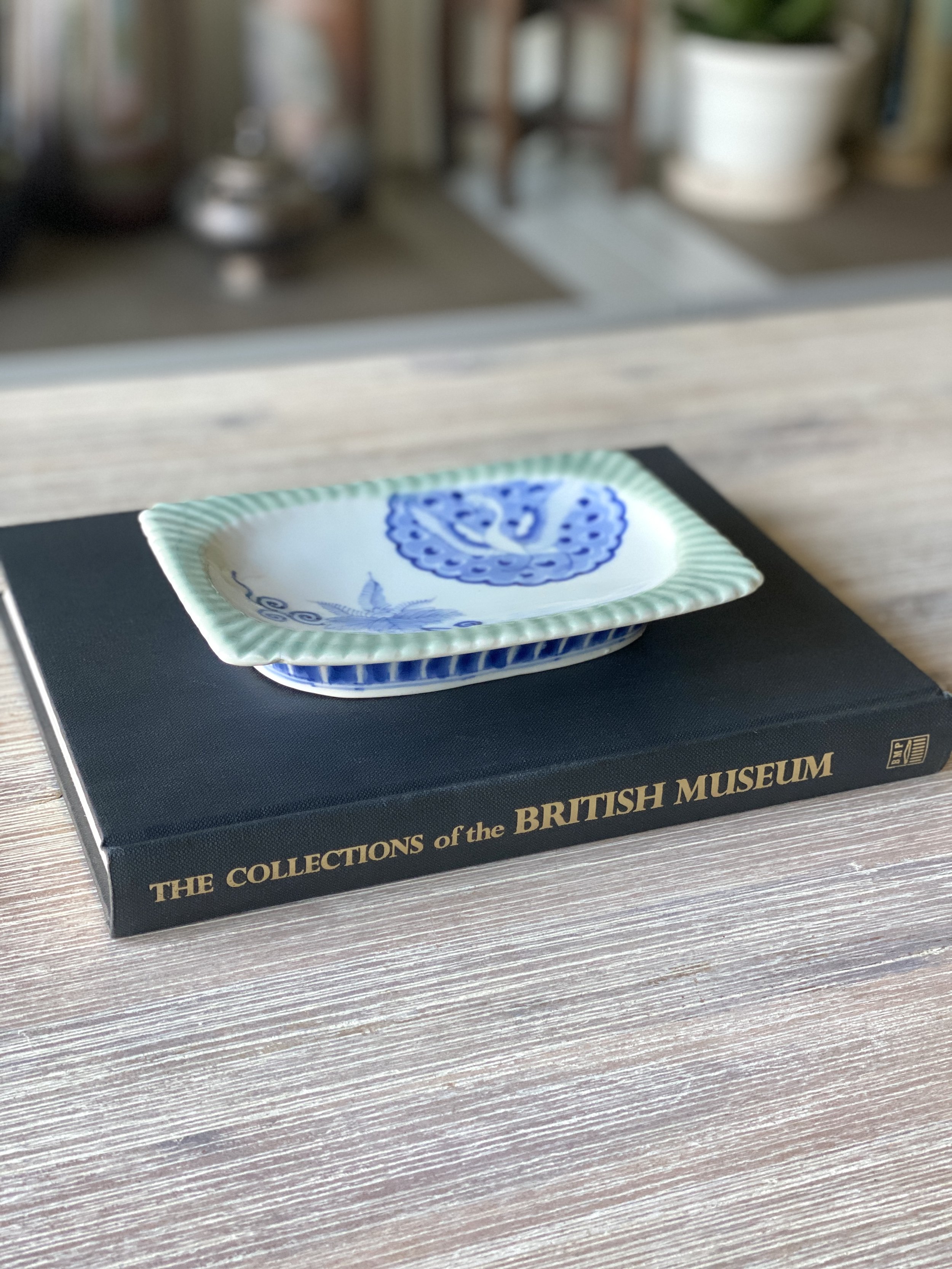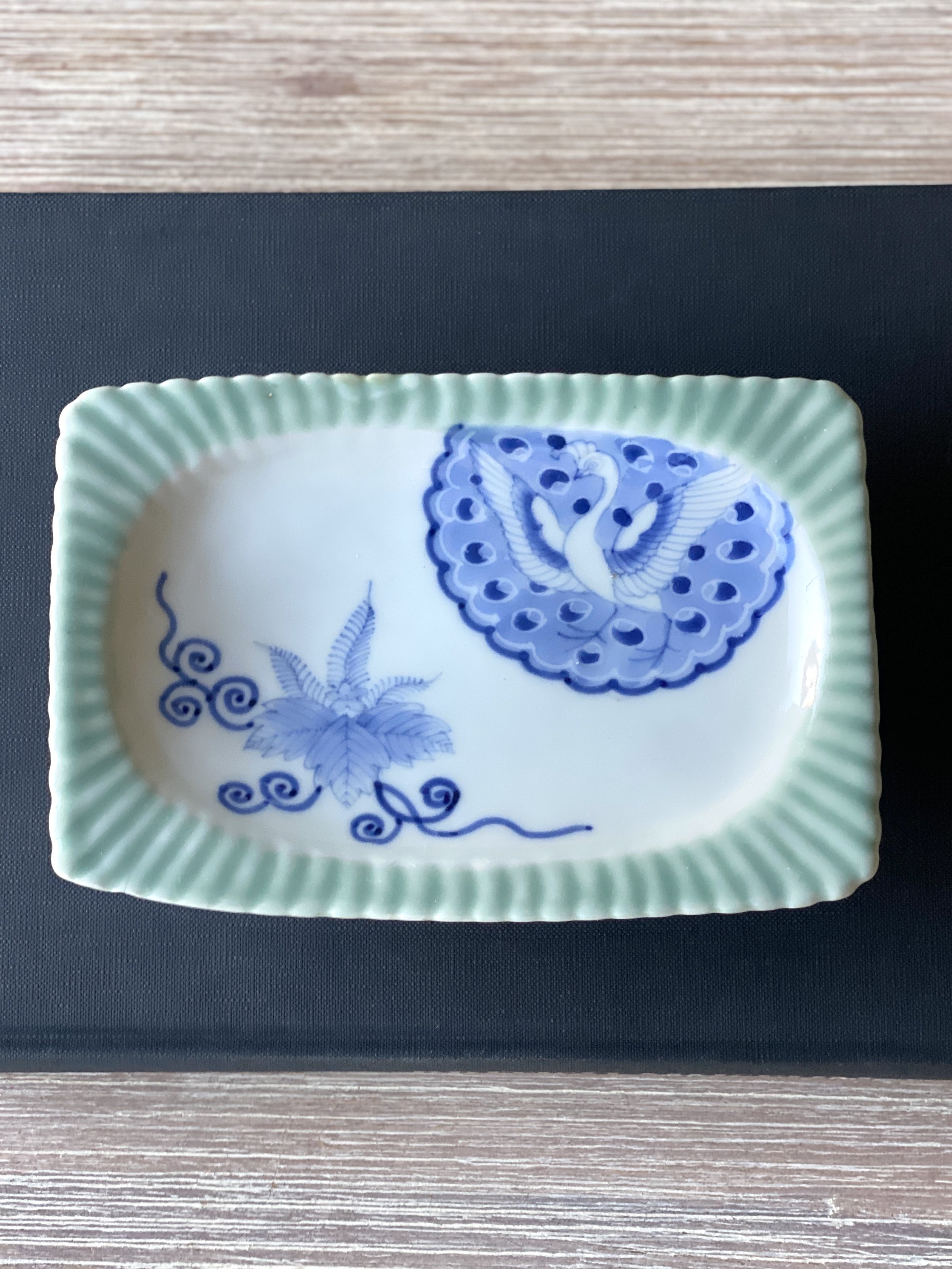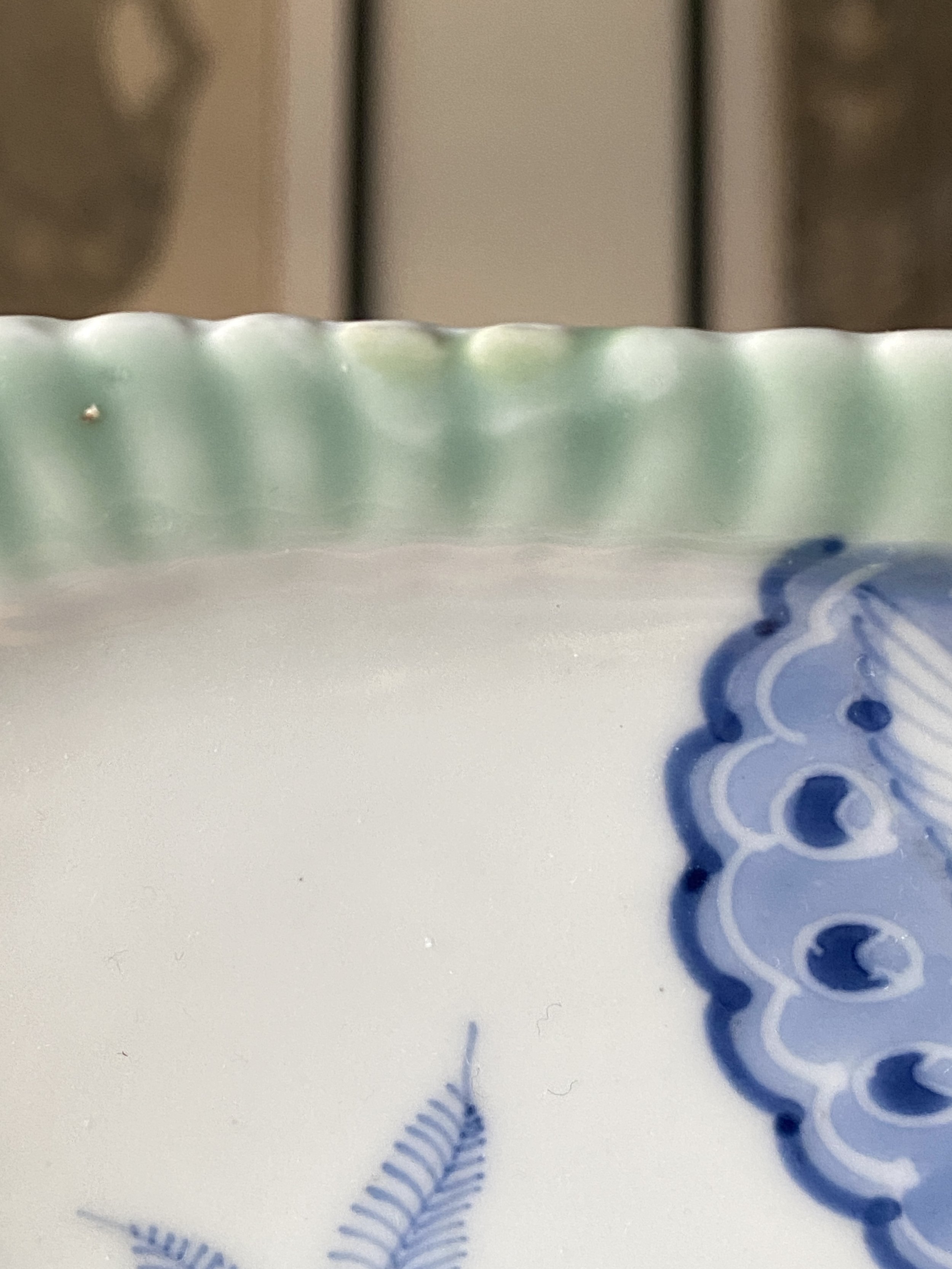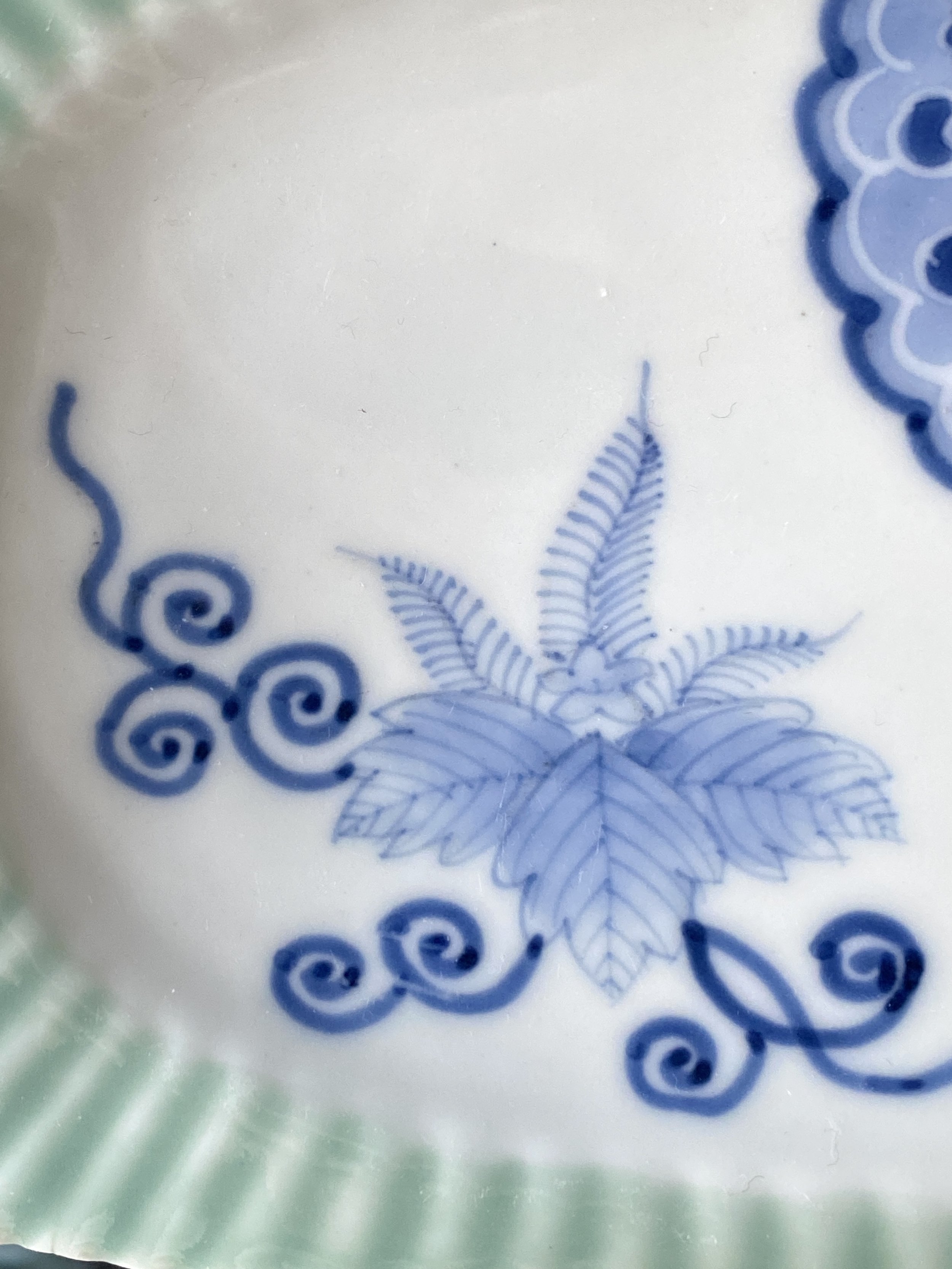Edo Period Ceramic Dish
Edo Period Hand-painted Footed Dish with Paulownia & Peacock Motif
From the late Edo Period (1750s–1850s)
Paulownia and Peacock Motifs have been hand-painted in Sometsuke (Cobalt Blue) Underglaze
Celadon glaze has been used around the rim
The foot of the dish has also been decorated in Cobalt Blue
The base is marked “Made in the Great Ming Year”, often seen on Edo period porcelain in reference to the Ming dynasty who first produced blue-and-white porcelain
Paulownia, or Kiri in Japanese, is a plant used as an Imperial emblem, symbolizing good fortune and favour from the gods
Peacocks are auspicious for the prosperity of offspring, warding off evil spirits, drawing in glamour, beauty, popularity, and marital harmony
SIZE (Approx.)
LENGTH 16.9CM (6.6“) X WIDTH 11.5CM (4.5”) X HEIGHT 2.2CM (0.9")
WEIGHT (without packaging)
295 Grams
CONDITION - VERY GOOD
One chip on the edge of the dish rim and some discoloration in a small section of the glaze, also on the rim. Overall very good condition considering its age.
Vintage, antique and pre-loved items may show some signs of aging or wear. Please inspect the photos carefully before making your purchase.
Please note colours may vary slightly depending on monitor settings.
SHIPPING
Free Delivery - please refer to Shipping & Returns for further information.
Edo Period Hand-painted Footed Dish with Paulownia & Peacock Motif
From the late Edo Period (1750s–1850s)
Paulownia and Peacock Motifs have been hand-painted in Sometsuke (Cobalt Blue) Underglaze
Celadon glaze has been used around the rim
The foot of the dish has also been decorated in Cobalt Blue
The base is marked “Made in the Great Ming Year”, often seen on Edo period porcelain in reference to the Ming dynasty who first produced blue-and-white porcelain
Paulownia, or Kiri in Japanese, is a plant used as an Imperial emblem, symbolizing good fortune and favour from the gods
Peacocks are auspicious for the prosperity of offspring, warding off evil spirits, drawing in glamour, beauty, popularity, and marital harmony
SIZE (Approx.)
LENGTH 16.9CM (6.6“) X WIDTH 11.5CM (4.5”) X HEIGHT 2.2CM (0.9")
WEIGHT (without packaging)
295 Grams
CONDITION - VERY GOOD
One chip on the edge of the dish rim and some discoloration in a small section of the glaze, also on the rim. Overall very good condition considering its age.
Vintage, antique and pre-loved items may show some signs of aging or wear. Please inspect the photos carefully before making your purchase.
Please note colours may vary slightly depending on monitor settings.
SHIPPING
Free Delivery - please refer to Shipping & Returns for further information.
Edo Period Hand-painted Footed Dish with Paulownia & Peacock Motif
From the late Edo Period (1750s–1850s)
Paulownia and Peacock Motifs have been hand-painted in Sometsuke (Cobalt Blue) Underglaze
Celadon glaze has been used around the rim
The foot of the dish has also been decorated in Cobalt Blue
The base is marked “Made in the Great Ming Year”, often seen on Edo period porcelain in reference to the Ming dynasty who first produced blue-and-white porcelain
Paulownia, or Kiri in Japanese, is a plant used as an Imperial emblem, symbolizing good fortune and favour from the gods
Peacocks are auspicious for the prosperity of offspring, warding off evil spirits, drawing in glamour, beauty, popularity, and marital harmony
SIZE (Approx.)
LENGTH 16.9CM (6.6“) X WIDTH 11.5CM (4.5”) X HEIGHT 2.2CM (0.9")
WEIGHT (without packaging)
295 Grams
CONDITION - VERY GOOD
One chip on the edge of the dish rim and some discoloration in a small section of the glaze, also on the rim. Overall very good condition considering its age.
Vintage, antique and pre-loved items may show some signs of aging or wear. Please inspect the photos carefully before making your purchase.
Please note colours may vary slightly depending on monitor settings.
SHIPPING
Free Delivery - please refer to Shipping & Returns for further information.

